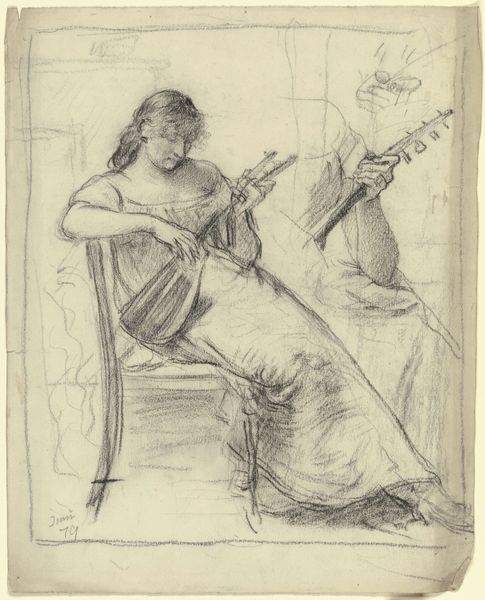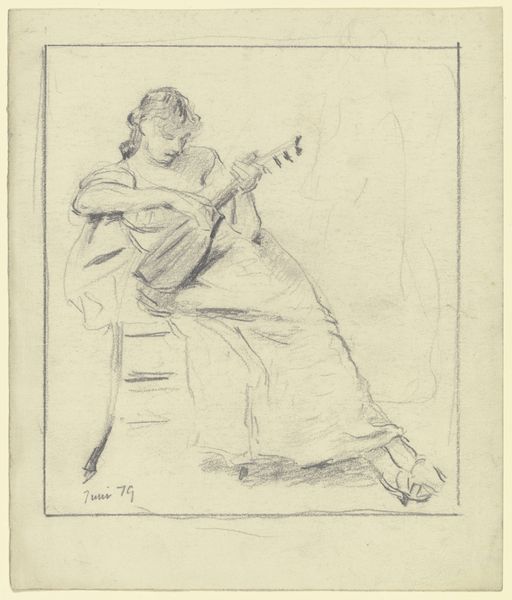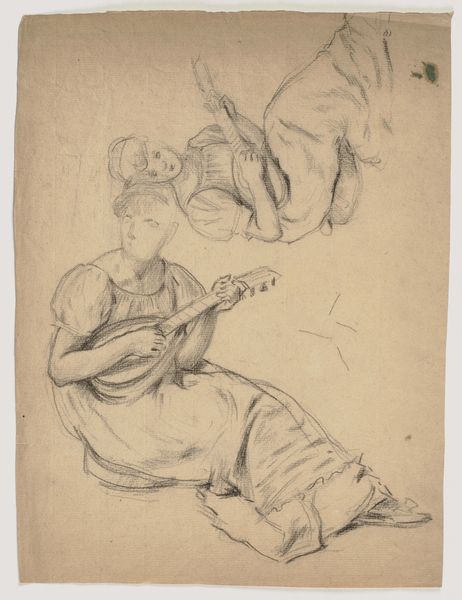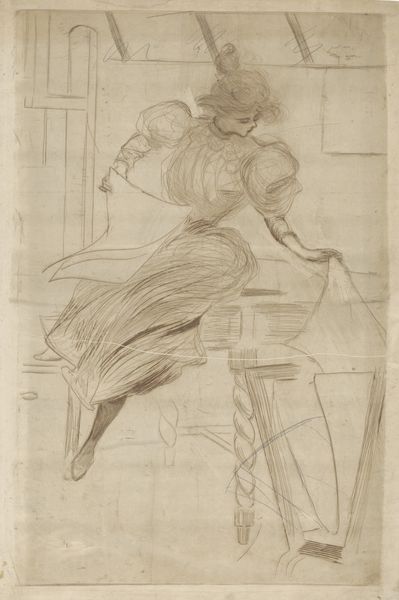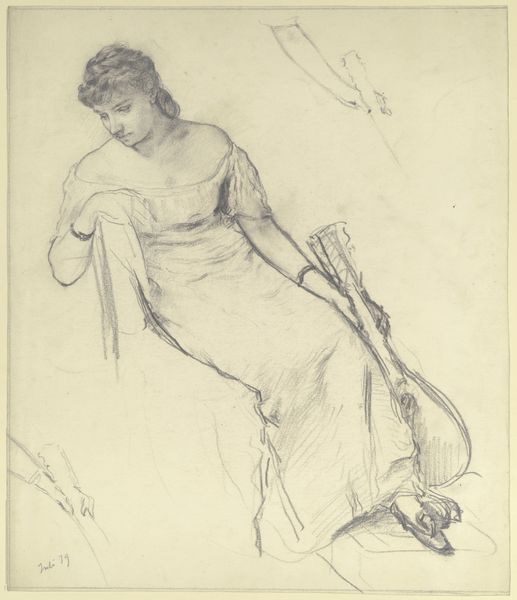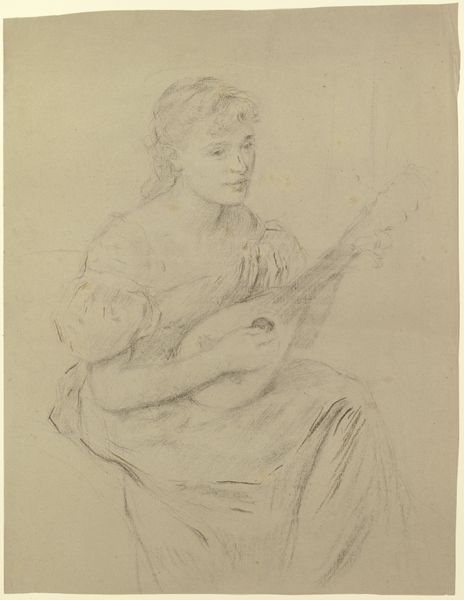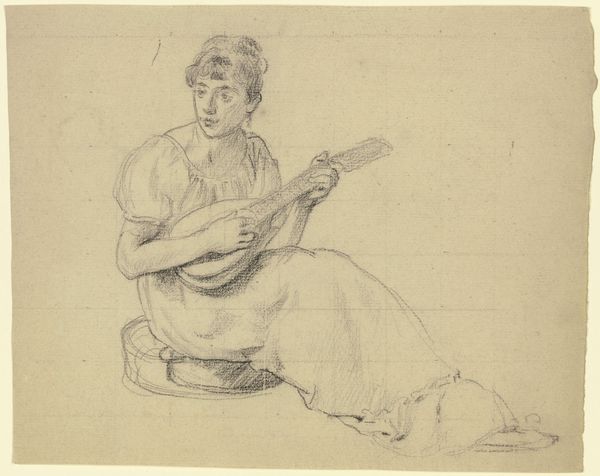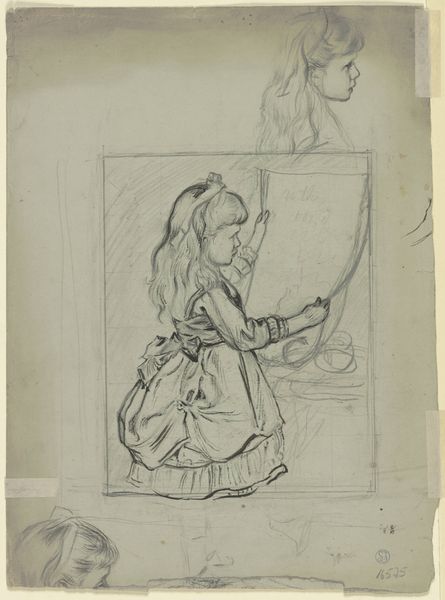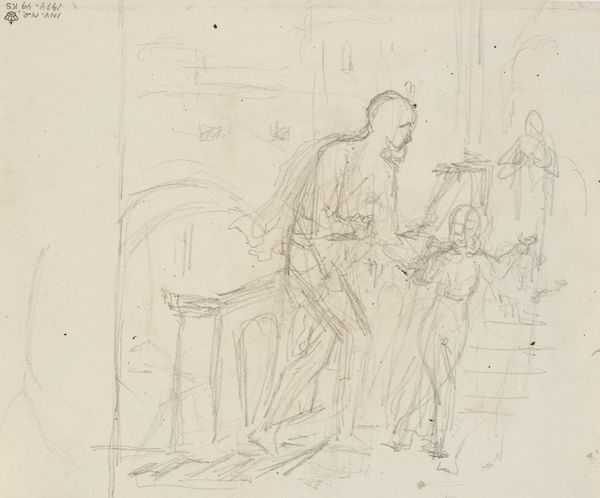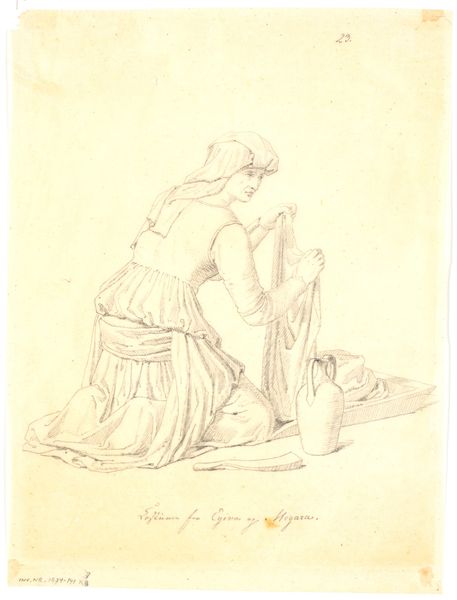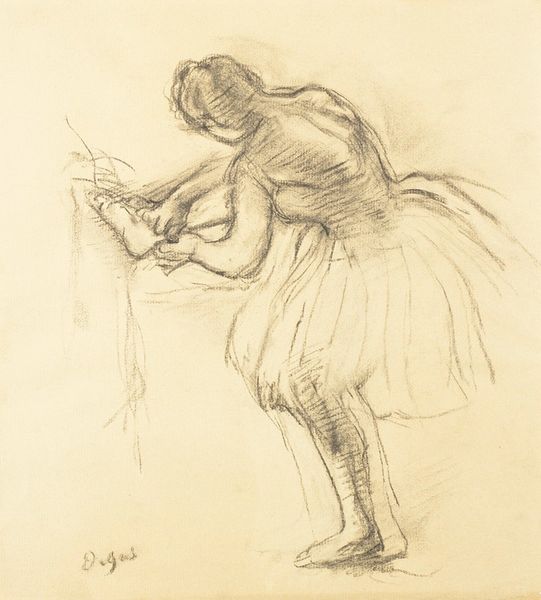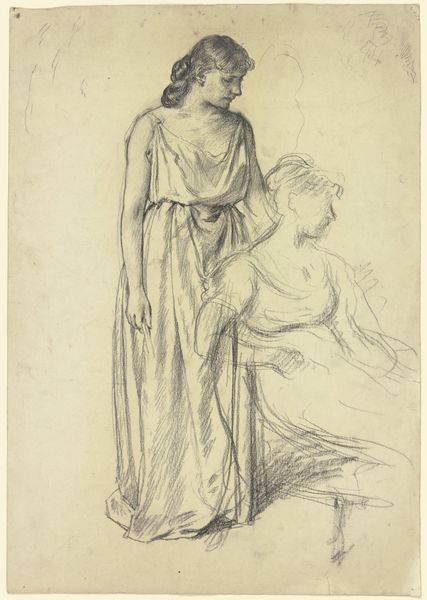
drawing, paper, graphite
#
portrait
#
drawing
#
16_19th-century
#
impressionism
#
figuration
#
paper
#
graphite
#
genre-painting
Copyright: Public Domain
Editor: This is Otto Scholderer's "Sitzende junge Frau, Mandoline spielend," from 1879, made with graphite on paper. It feels so… ephemeral, almost like a fleeting moment captured. What's your perspective on this drawing? Curator: Well, let's start with the basics: graphite on paper. It’s not just about depicting a young woman playing the mandolin, but about the *means* of depiction. Graphite, mass-produced since the 19th century, signifies a shift in artistic creation, from unique masterpieces to reproducible images, thus allowing a broader population to generate similar artworks. The presence of grid lines is a kind of "factory setting" which the artist must overcome in making his artwork, reflecting new pressures. It invites us to consider the role of mass production, materiality, and access to creative tools within the context of Impressionism, wouldn’t you say? Editor: I see what you mean. The visible grid, along with two figures, does push the idea of reproducibility, but what does that say about the subject itself? Is the sitter part of this shift, too? Curator: Possibly. The image itself reflects the emerging consumer culture; even music and its performance could be seen as products, and not simply an act of cultivated art, to be bought and sold. Her mandolin then becomes less about personal expression, and more about fitting a certain mold – literally, perhaps, reflected by those initial gridded pencil markings that guide the initial sketch. How does the social context then inform how you view the “genre painting” as it’s described here? Editor: So, instead of a unique portrait, it is actually about art’s changing role, now more reproducible and commercialized. That actually reshapes my understanding completely! Curator: Precisely! And it invites us to further question traditional views of art production by integrating these social and economic dimensions. Editor: I've learned to see art not only through the visual image but how its process reflects a certain context in time.
Comments
No comments
Be the first to comment and join the conversation on the ultimate creative platform.
